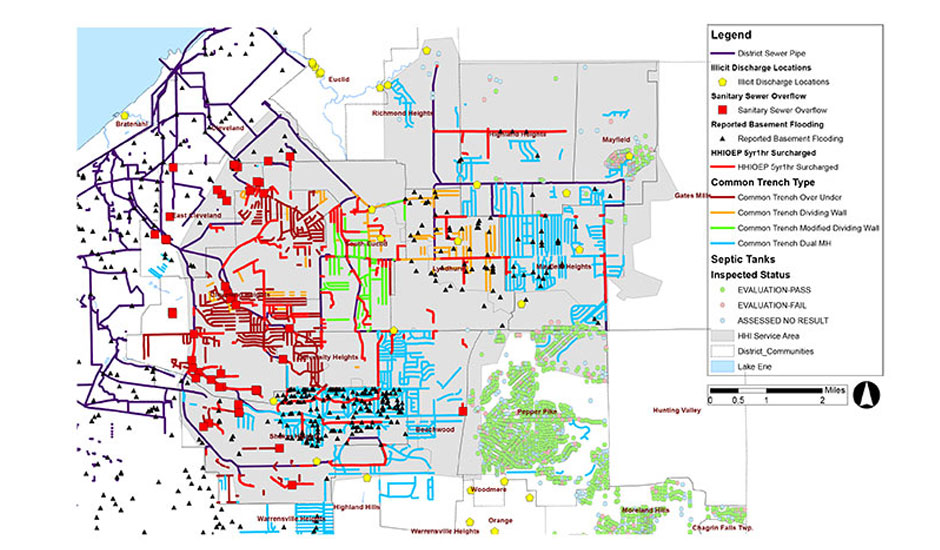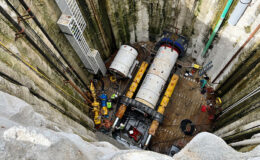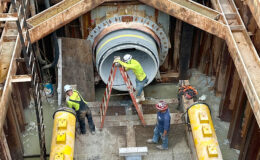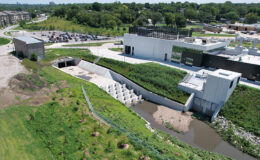Seeking to identify local collection system improvements that can positively impact regional water quality and public health, the Northeast Ohio Regional Sewer District (NEORSD) is conducting local sewer system evaluation studies across its service area in known problem areas. The first study area is the Heights Hilltop Sewershed that includes all or parts of 16 suburban separate sewer communities east of Cleveland. Wade Trim is leading the Heights Hilltop Interceptor Local Sewer System Evaluation Study (HHI-LSSES) to assess potential Clean Water Act (CWA) issues such as sanitary sewer overflows and basement flooding, and identify capacity limitations. Existing information will be collected and reviewed with new flow/rainfall monitoring and field investigations to develop an updated Geographic Information System (GIS) and conduct hydraulic analysis and modeling of existing conditions and improvement alternatives. The study will develop potential planning-level projects and costs to address identified issues and prioritize recommended improvements in the local community sewer systems. Selected projects would then be implemented by the local communities with District assistance.
Major team members include Brown and Caldwell, ADS Environmental Services and C&K Industrial Services. Our minority-owned, women-owned and small business (M/W/SBE) team members include Water Resources & Coastal Engineering, KS Associates, Armak, Regency, CW Courtney, Chagrin Valley Engineering, Stephen Hovancsek & Associates and Onyx Engineering. We are committed to working with local M/W/SBE firms on projects and helping them build expertise and expand capabilities. Additional team members include CT Consultants and GPD Group.
One of our M/W/SBE team members, Water Resources & Coastal Engineering, is leading the HHI-LSSES flow and rainfall monitoring program. The program is being conducted to support expansion of the District’s hydrologic/hydraulic model into local sewer systems and identify potential problem areas and sources of I/I for further investigation. Two types of sewer monitoring will be conducted: calibration monitoring of 150 temporary sites over 3 months and micromonitoring using 60 flow meters over 7 months. In addition, 10 temporary rain gauges will be used throughout the project area to supplement 7 existing gauges.







